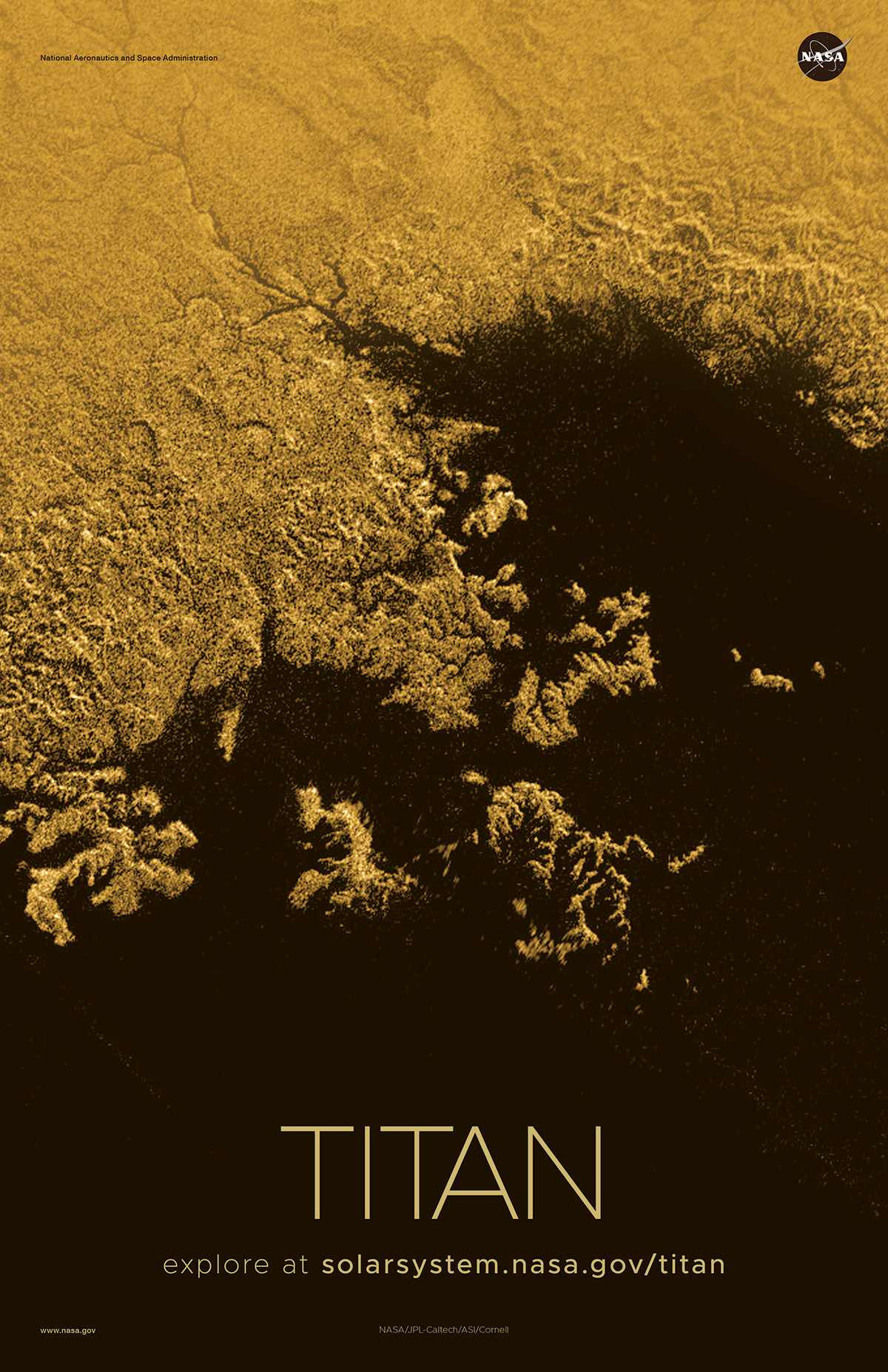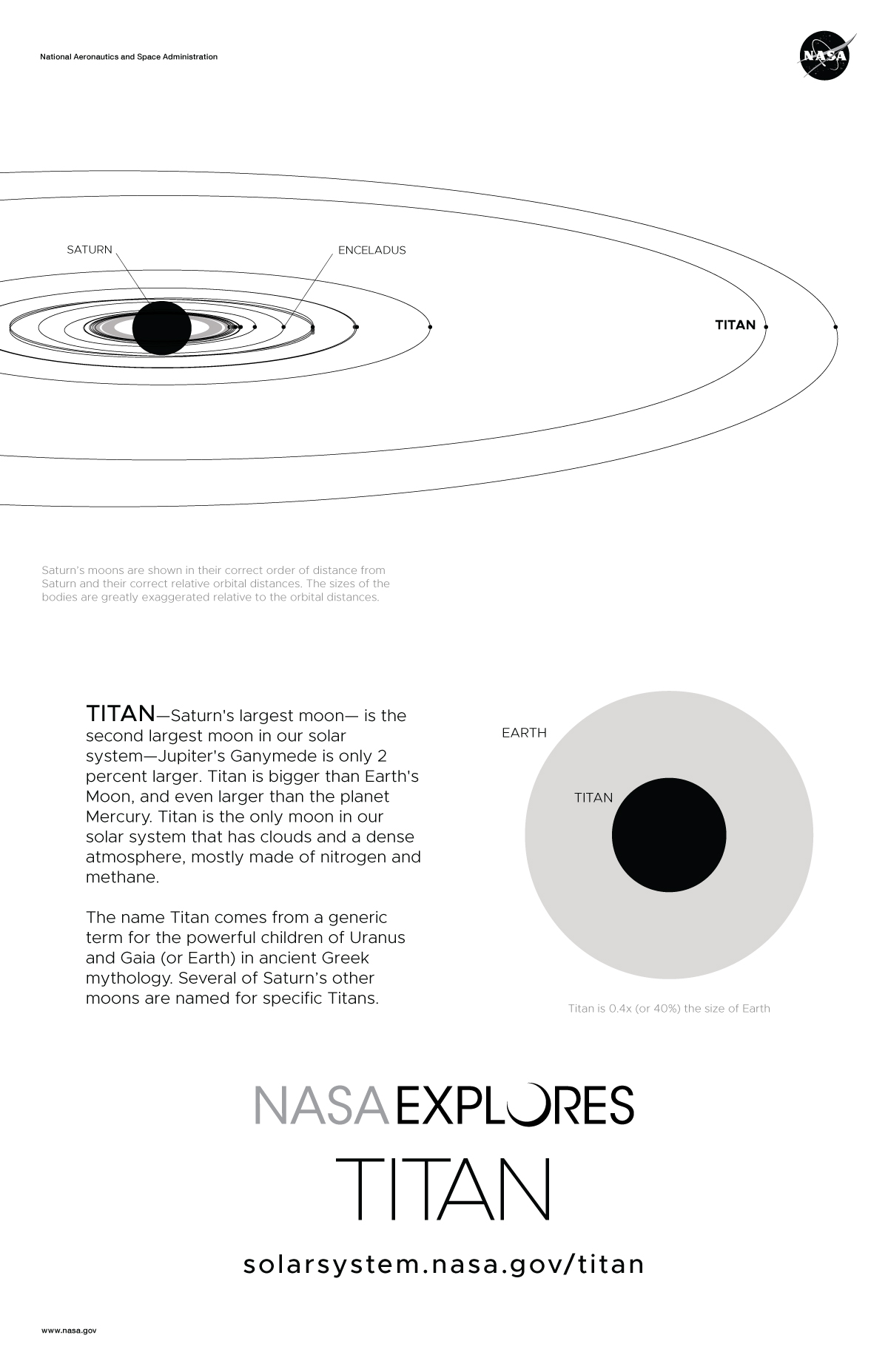Saturn’s Moon Titan Poster – Version B

| Credit | NASA |
|---|---|
| Language |
|
Version B of the Titan installment of our solar system poster series.
The posters are best printed on 11x17 paper. Several download options are available in the column on the right.
About the image: Ligeia Mare, shown here in a false-color image from NASA's Cassini mission, is the second largest known body of liquid on Saturn's moon Titan. It is filled with liquid hydrocarbons, such as ethane and methane. Credit: NASA/JPL-Caltech/ASI/Cornell
On the Back
Saturn's largest moon, Titan, is the second largest moon in our solar system—Jupiter's Ganymede is only 2 percent larger.
Titan is bigger than Earth's Moon, and even larger than the planet Mercury.

Titan is the only moon in our solar system that has clouds and a dense atmosphere, mostly made of nitrogen and methane. It is also the only other place in the solar system known to have an earthlike cycle of liquids evaporating, raining and flowing across its surface.
But on Titan, instead of water, the clouds, rain, rivers, seas and lakes are made of liquid hydrocarbons. The moon’s surface is icy, at hundreds of degrees below freezing. Large regions are covered in dunes made of hydrocarbon “sand” that has settled out of the hazy, smoggy atmosphere.
The name Titan comes from a generic term for the powerful children of Uranus and Gaia (or Earth) in ancient Greek mythology. Several of Saturn’s other moons are named for specific Titans.
Explore Titan in depth at https://solarsystem.nasa.gov/titan
